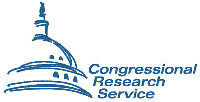United States Congress

Congressional Research Service Reports
Date of this Version
2006
Abstract
Public interest in approaches that might provide prescription drugs at lower cost, particularly for the elderly, has rekindled discussion over the role the federal government plays in facilitating the creation of new pharmaceuticals for the marketplace. In the current debate, some argue that the government’s financial, scientific, and/or clinical support of health-related research and development (R&D) entitles the public to commensurate considerations in the prices charged for any resulting drugs. Others view government intervention in price decisions based upon initial federal funding as contrary to a long-term trend of government promotion of innovation, technological advancement, and the commercialization of technology by the business community leading to new products and processes for the marketplace.
The government traditionally funds R&D to meet the mission requirements of the federal departments and agencies. It also supports work in areas where there is an identified need for research, primarily basic research, not being performed in the private sector. Over the past 25 years, congressional initiatives have expanded the government’s role to include the promotion of technological innovation to meet other national needs, particularly the economic growth that flows from the use of new and improved goods and services. Various laws facilitate commercialization of federallyfunded R&D through technology transfer, cooperative R&D, and intellectual property rights. The legislated incentives are intended to encourage additional private sector investments often necessary to further develop marketable products. The current approach to technology development attempts to balance the public sector’s interest in new and improved technologies with concerns over providing companies valuable benefits without adequate accountability or compensation.
Some question whether or not the current balance is appropriate, particularly with respect to drug discovery. The particular nature and expense of health-related R&D has focused attention on the manner in which the National Institutes of Health (NIH) undertakes research activities. Critics maintain that the need for technology development incentives in the pharmaceutical and/or biotechnology sectors is mitigated by industry access to government-supported work at no cost, monopoly power through patent protection, and additional regulatory and tax advantages such as those conveyed through the Hatch-Waxman Act and the Orphan Drug Act. Supporters of the existing approach argue that these incentives are precisely what are required and have given rise to robust pharmaceutical and biotechnology industries. It remains to be seen whether or not decisions related to federal involvement in issues related to pharmaceutical R&D will change the nature of the current approach to government-industry-university cooperation. This report will be updated as events warrant.


Comments
Published by Congressional Research Service, www.crs.gov, RL32324